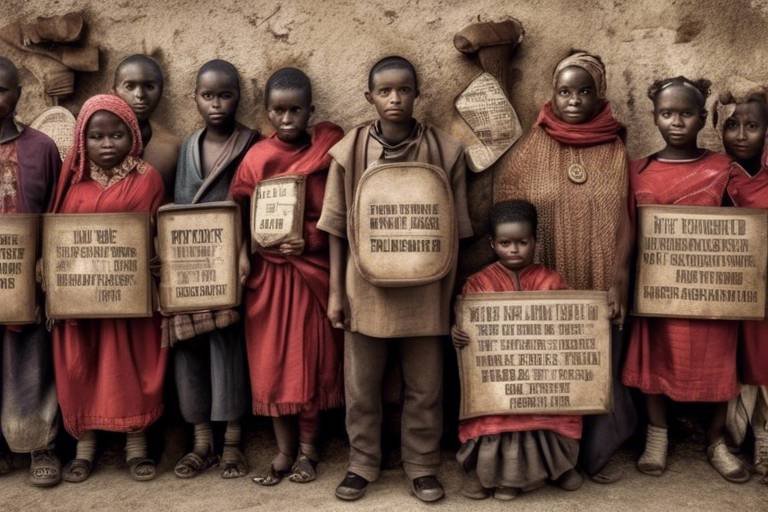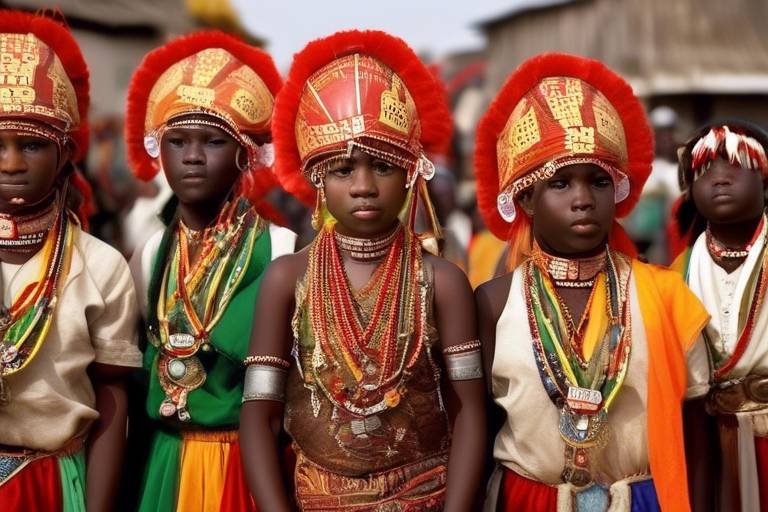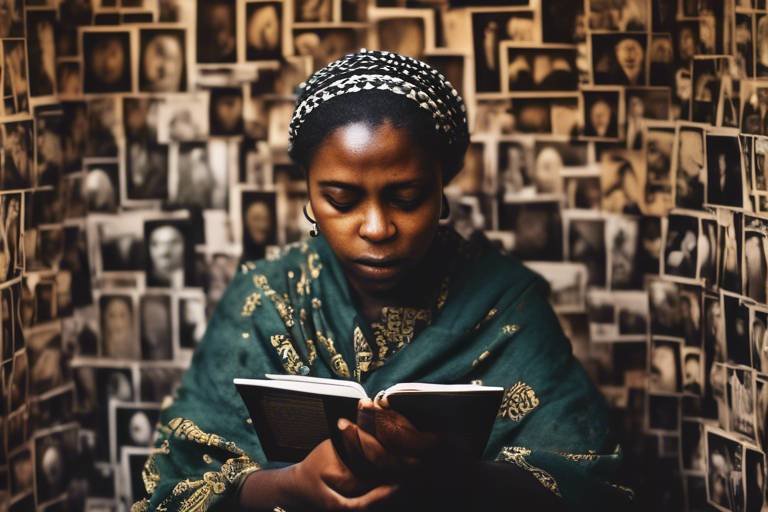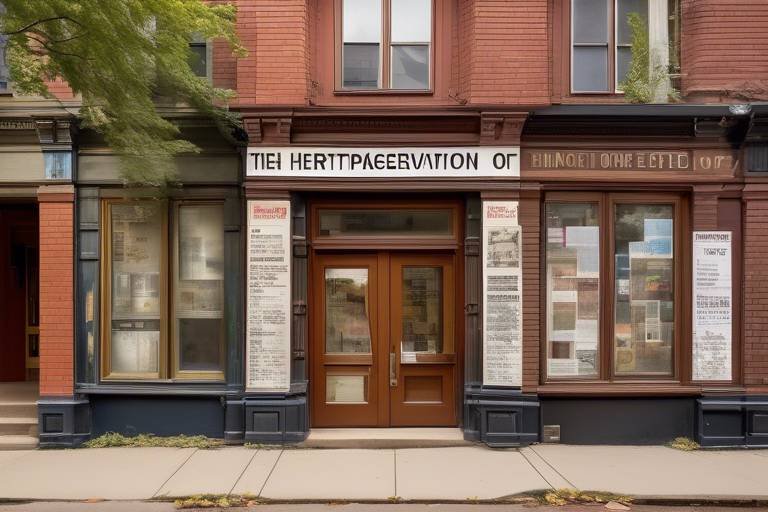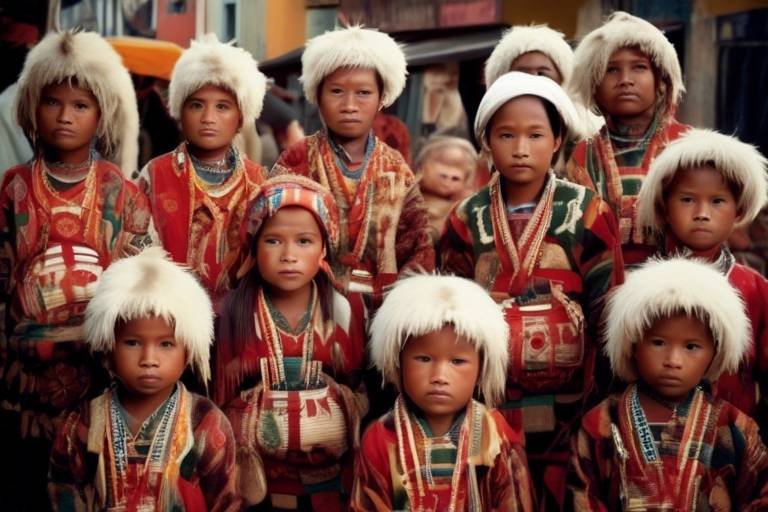Who Protects Our Heritage? The Role of Local Communities
Cultural heritage is like a precious gem, passed down through generations, each facet reflecting the history and identity of a community. But who stands guard over this invaluable treasure? It is the local communities, the unsung heroes of heritage preservation, who play a pivotal role in protecting our shared legacy. These communities, deeply rooted in the soil of tradition and history, are the true guardians of our heritage, safeguarding it against the ravages of time and modernization.

The Importance of Heritage Preservation
Cultural heritage preservation is not merely about protecting old buildings or artifacts; it is about safeguarding the stories, traditions, and identities of a community. Imagine a town without its historic landmarks, museums, or ancient monuments. It would be like a book missing its most crucial chapters, leaving a void in the narrative of its people. Preserving heritage is a way of honoring the past, celebrating the present, and shaping the future.

Challenges Faced by Local Communities
Cultural heritage is the heartbeat of a community, embodying its unique identity, history, and traditions. Preserving this heritage is not just about conserving physical artifacts; it is about safeguarding the soul of a place, the essence of its existence. Through heritage preservation, local communities honor their past, celebrate their present, and pave the way for a vibrant future.
As local communities strive to protect their heritage, they encounter a myriad of challenges that threaten the integrity and longevity of their cultural treasures. Limited financial resources often hinder conservation efforts, making it difficult to carry out essential maintenance and restoration projects. Additionally, the lack of expertise and technical knowledge poses a significant obstacle, as preserving heritage sites requires specialized skills and training.
Furthermore, the encroachment of modern development and urbanization puts heritage sites at risk of destruction and alteration. Balancing the need for progress with the imperative of preservation is a delicate dance that many communities struggle to navigate. Moreover, the threat of natural disasters looms large, with unpredictable events such as earthquakes, floods, and fires posing a constant danger to vulnerable heritage structures.
In the face of these challenges, local communities are forced to find innovative solutions and collaborative strategies to ensure the protection of their heritage for future generations. By overcoming these obstacles, communities demonstrate their resilience and commitment to preserving the legacy of their ancestors.
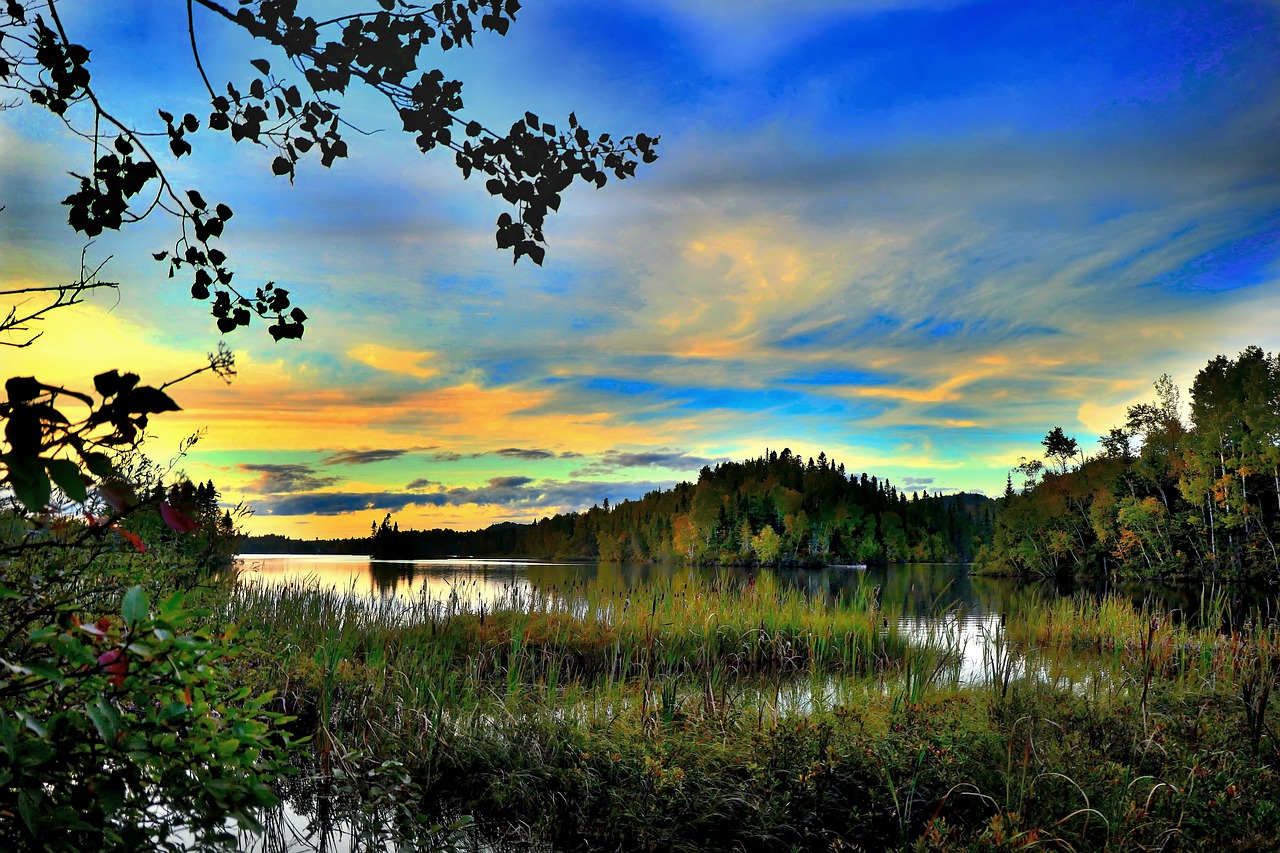
Community-Led Conservation Efforts
Community-led conservation efforts play a crucial role in safeguarding our cultural heritage for future generations. When local communities take the initiative to protect their heritage sites and artifacts, they are not only preserving history but also nurturing a sense of pride and ownership among the residents. These efforts are driven by a deep connection to the heritage that forms the foundation of their identity.
One of the key aspects of community-led conservation is the grassroots involvement in decision-making processes. Unlike top-down approaches, where external entities dictate conservation strategies, local communities are actively engaged in planning and implementing preservation efforts. This bottom-up approach ensures that the conservation initiatives are tailored to the specific needs and values of the community.
Moreover, community-led conservation efforts often leverage traditional knowledge and practices that have been passed down through generations. By integrating indigenous wisdom with modern conservation techniques, local communities can create sustainable and culturally sensitive preservation methods that resonate with their heritage.
Collaboration and partnerships are also vital components of community-led conservation. By working together with governmental bodies, non-governmental organizations, and other stakeholders, local communities can pool resources, expertise, and support to effectively protect and promote their cultural heritage. These partnerships enable communities to access funding, technical assistance, and advocacy networks that enhance the impact of their conservation efforts.
Furthermore, community-led conservation fosters a sense of collective responsibility and stewardship among residents. When individuals actively participate in the preservation of heritage sites, they develop a deeper appreciation for their cultural legacy and become advocates for sustainable conservation practices. This sense of ownership instills a commitment to long-term preservation that transcends individual interests and benefits the entire community.
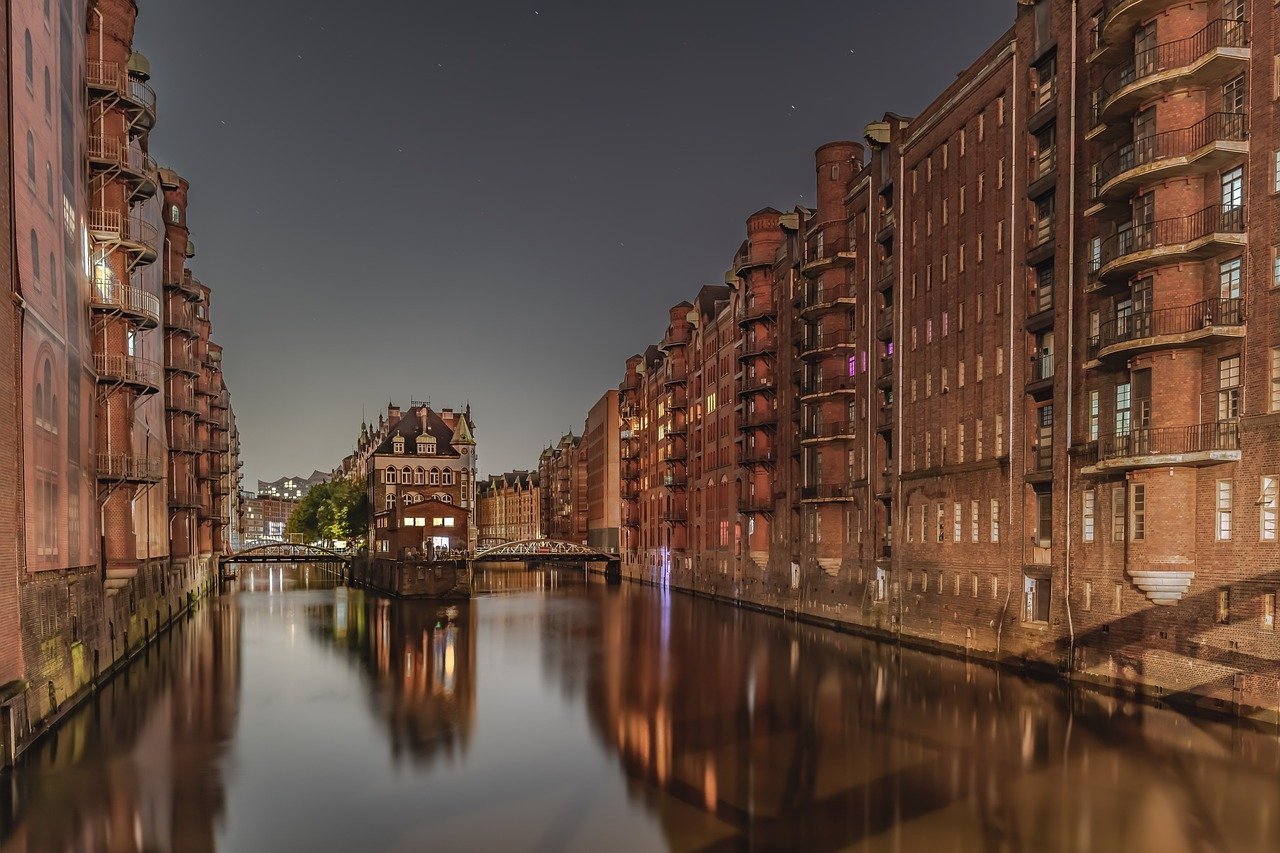
Collaboration with Government and NGOs
The preservation of cultural heritage is a critical endeavor that requires the collective effort of various stakeholders. In this article, we delve into the pivotal role played by local communities in safeguarding and protecting our rich heritage. From the challenges they face to the innovative solutions they employ, let's explore how these unsung heroes are the true guardians of our cultural legacy.
Collaboration between local communities, government entities, and non-governmental organizations is essential in ensuring the effective protection and promotion of cultural heritage. By joining forces, these diverse groups can leverage their unique strengths and resources to address complex challenges and implement sustainable conservation strategies.
Government bodies often provide regulatory frameworks, financial support, and expertise in heritage management. Their involvement is crucial in setting policies, allocating funds, and coordinating large-scale conservation projects. On the other hand, NGOs bring specialized knowledge, community engagement tools, and advocacy skills to the table. Their grassroots approach and passion for heritage preservation complement the efforts of local communities and government agencies.
Through collaborative initiatives, stakeholders can pool their resources, share best practices, and implement comprehensive conservation plans that benefit both the heritage sites and the surrounding communities. By fostering partnerships built on trust, transparency, and mutual respect, these alliances create a solid foundation for long-term heritage protection and sustainable development.
Moreover, collaboration enables the exchange of ideas, experiences, and innovations among different stakeholders, leading to creative solutions and adaptive strategies. By tapping into the collective wisdom of diverse partners, local communities can enhance their capacity to address emerging threats, such as climate change, urbanization, and tourism pressures, that endanger our cultural heritage.
Ultimately, collaboration with government agencies and NGOs empowers local communities to become proactive stewards of their heritage. By working together towards a common goal of preserving and promoting cultural treasures, these partnerships not only safeguard our past but also shape a more inclusive and resilient future for generations to come.

Educational Programs and Awareness Campaigns
Educational programs and awareness campaigns play a crucial role in empowering local communities to become stewards of their cultural heritage. By providing knowledge and understanding of the significance of heritage preservation, these initiatives ignite a sense of pride and responsibility within community members. Through interactive workshops, seminars, and guided tours, educational programs offer a platform for individuals to learn about the history and value of their heritage sites. These programs not only educate but also foster a deeper connection between the community and its cultural legacy.
Awareness campaigns serve as a vehicle for disseminating information about the threats faced by heritage sites and the importance of conservation efforts. Utilizing various media channels such as social media, television, and community events, these campaigns raise public consciousness and garner support for heritage protection. By highlighting success stories and showcasing the positive impact of conservation projects, awareness campaigns inspire active participation and engagement from the community.
Collaborative efforts between educational institutions, local authorities, and heritage organizations are instrumental in developing comprehensive programs that cater to diverse audiences. By tailoring educational content to different age groups and interests, these initiatives ensure that heritage preservation becomes a shared responsibility embraced by all community members. Moreover, involving youth in heritage-related activities cultivates a sense of belonging and instills a long-term commitment to safeguarding cultural assets for future generations.

Sustainable Tourism and Heritage Protection
Sustainable tourism plays a crucial role in the protection and preservation of our cultural heritage. By promoting responsible travel practices, communities can ensure that their heritage sites are not only visited but also respected and conserved for future generations to enjoy. Sustainable tourism involves mindful interactions with the environment, culture, and local communities, aiming to minimize negative impacts while maximizing the benefits for all stakeholders involved.
One of the key aspects of sustainable tourism is the emphasis on authenticity and respect for local traditions and customs. By encouraging visitors to engage with the local culture in a respectful manner, communities can foster a sense of appreciation for their heritage and traditions. This approach not only benefits the local economy but also contributes to the overall preservation of cultural heritage sites.
Moreover, sustainable tourism practices often involve community-based initiatives that prioritize the well-being of the local residents and the environment. By involving the community in tourism planning and decision-making processes, stakeholders can ensure that tourism activities align with the community's values and goals for heritage conservation.
Additionally, sustainable tourism promotes the diversification of tourism offerings, encouraging visitors to explore lesser-known heritage sites and engage in authentic cultural experiences. This approach helps distribute the benefits of tourism more evenly across different regions, reducing the pressure on popular tourist destinations and spreading the economic gains to a wider range of communities.
Overall, sustainable tourism not only safeguards our cultural heritage for future generations but also fosters a sense of pride and stewardship among local communities. By promoting responsible travel practices and supporting community-led conservation efforts, sustainable tourism can be a powerful tool in ensuring the long-term protection and preservation of our rich cultural heritage.

Technology and Innovation in Heritage Conservation
Technology and innovation are revolutionizing the field of heritage conservation, offering new tools and methods for local communities to protect and preserve their cultural treasures. From digital mapping and 3D modeling to virtual reality experiences, technology is enabling heritage guardians to document, analyze, and showcase heritage sites in unprecedented ways. These innovative approaches not only enhance our understanding of cultural heritage but also provide valuable data for conservation efforts.
One remarkable example of technology in heritage conservation is the use of drones for aerial surveys and monitoring of heritage sites. Drones equipped with high-resolution cameras can capture detailed images of inaccessible areas, allowing conservationists to assess the condition of structures and detect potential threats such as erosion or illegal activities. This aerial perspective offers a comprehensive view of heritage landscapes, aiding in decision-making processes and conservation planning.
Furthermore, the application of advanced imaging techniques such as LiDAR (Light Detection and Ranging) has revolutionized the way heritage sites are studied and preserved. LiDAR technology enables precise mapping of terrain and structures, revealing hidden features and archaeological remains that are invisible to the naked eye. By creating detailed 3D models of heritage sites, conservationists can digitally preserve them for future generations and monitor changes over time.
Virtual reality (VR) technology is another powerful tool that is being utilized to engage audiences and raise awareness about cultural heritage. Through immersive VR experiences, individuals can explore ancient ruins, historical landmarks, and cultural artifacts in a virtual environment, bringing the past to life in a captivating and interactive way. This innovative approach not only educates the public about the importance of heritage conservation but also fosters a sense of connection and stewardship towards our shared cultural legacy.
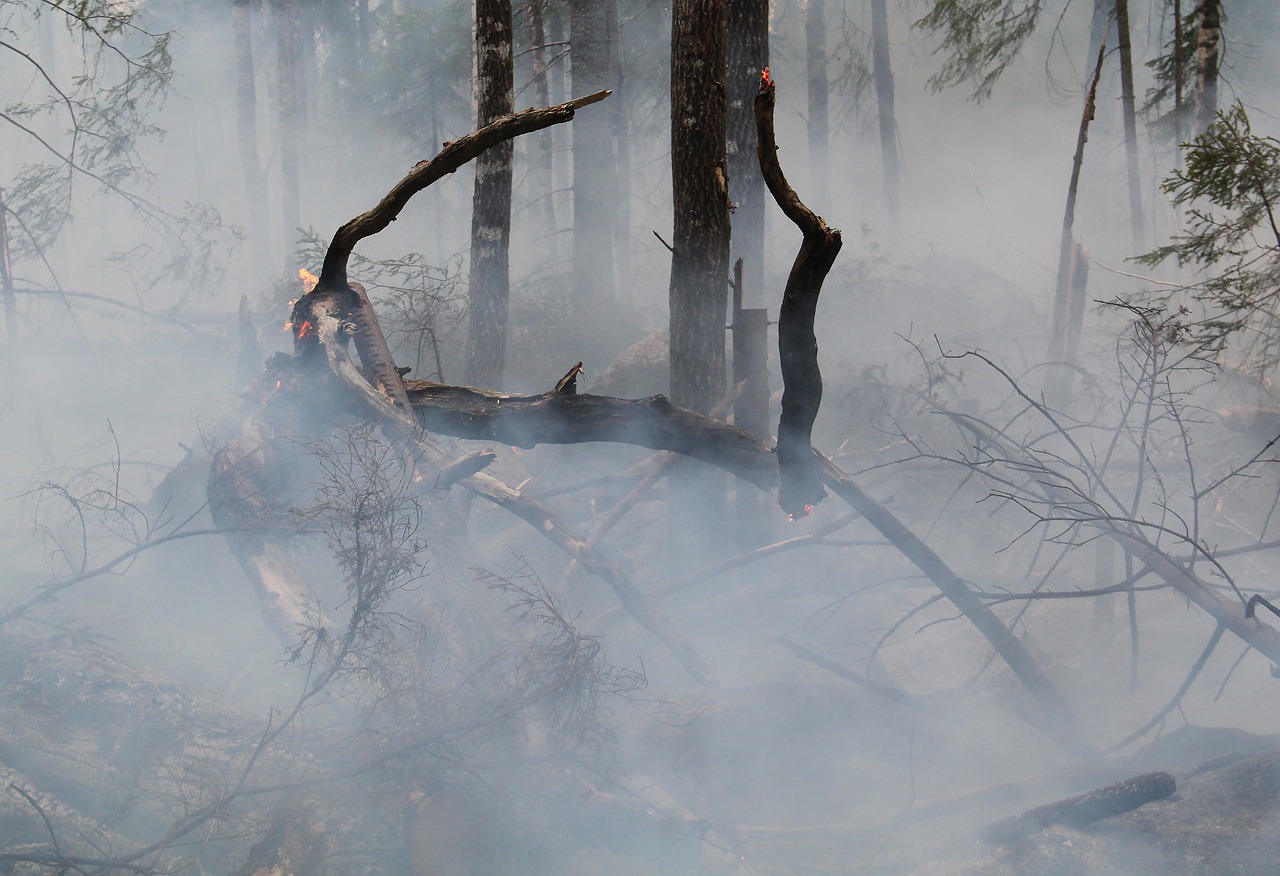
Success Stories of Community-Led Conservation
When it comes to heritage conservation, some of the most remarkable success stories emerge from the dedicated efforts of local communities. These unsung heroes, driven by a deep sense of pride and responsibility towards their cultural legacy, have achieved extraordinary feats in preserving and protecting heritage sites that hold immense historical and sentimental value.
One such inspiring tale comes from a small village nestled in the heart of a lush valley, where residents banded together to restore a centuries-old temple that had fallen into disrepair. Through community fundraisers, volunteer labor, and expert guidance from heritage conservationists, the temple was meticulously renovated, breathing new life into the sacred structure and reviving age-old traditions.
In another instance, a coastal community facing the threat of erosion took innovative measures to safeguard their ancestral burial grounds from being lost to the relentless tides. By implementing eco-friendly coastal protection methods and engaging in reforestation projects, the community not only preserved their heritage but also contributed to the overall environmental sustainability of the region.
Furthermore, a group of indigenous elders in a remote mountainous region initiated a cultural revival program aimed at reconnecting younger generations with their tribal heritage. Through storytelling sessions, traditional craftsmanship workshops, and community celebrations, the elders successfully passed down ancient knowledge and practices, ensuring that their heritage remained vibrant and alive.
These success stories exemplify the power of community-led conservation efforts in not only safeguarding tangible artifacts and sites but also in fostering a sense of unity, pride, and resilience among local residents. By actively engaging with their cultural heritage, communities become the guardians of their own history, shaping a future that honors the past while embracing progress.

Empowering Future Generations as Heritage Guardians
Empowering future generations as heritage guardians is crucial for ensuring the continued protection and preservation of our cultural legacy. Just as the current local communities have taken on the responsibility of safeguarding heritage sites and artifacts, it is essential to instill a sense of pride and ownership in younger generations.
By educating the youth about the significance of cultural heritage and the importance of preserving it for future generations, we are nurturing a new wave of heritage guardians. Through interactive educational programs and engaging workshops, young individuals can develop a deep connection with their heritage and understand the value it holds for their community.
Furthermore, involving children and teenagers in hands-on conservation projects can provide them with practical experience and a sense of accomplishment. By actively participating in heritage preservation efforts, young people not only learn valuable skills but also develop a strong sense of responsibility towards their cultural heritage.
Collaborating with schools, universities, and youth organizations to integrate heritage conservation into curricula and extracurricular activities can help in fostering a culture of heritage stewardship among the younger generation. By making heritage preservation a part of their everyday lives, we are ensuring that future guardians are equipped with the knowledge and passion to protect our shared heritage.
Ultimately, empowering future generations as heritage guardians is about creating a legacy of stewardship and respect for cultural heritage. By investing in the education and engagement of young people, we are laying the foundation for a sustainable future where our heritage is not only preserved but celebrated and cherished by all.
Frequently Asked Questions
- What is the role of local communities in heritage preservation?
Local communities play a crucial role in heritage preservation by being the custodians of their cultural sites and traditions. They hold valuable knowledge and insights that are essential for the safeguarding and promotion of our shared heritage.
- How can local communities overcome challenges in protecting their heritage?
Local communities can overcome challenges in heritage protection through collaboration, education, and sustainable practices. By working together with government bodies, NGOs, and utilizing innovative approaches, communities can effectively safeguard their heritage for future generations.
- Why is it important to involve younger generations in heritage conservation?
Involving younger generations in heritage conservation is vital to ensure the continued protection and preservation of cultural sites. By instilling a sense of responsibility and pride in the youth, we empower them to become the guardians of our heritage for years to come.

